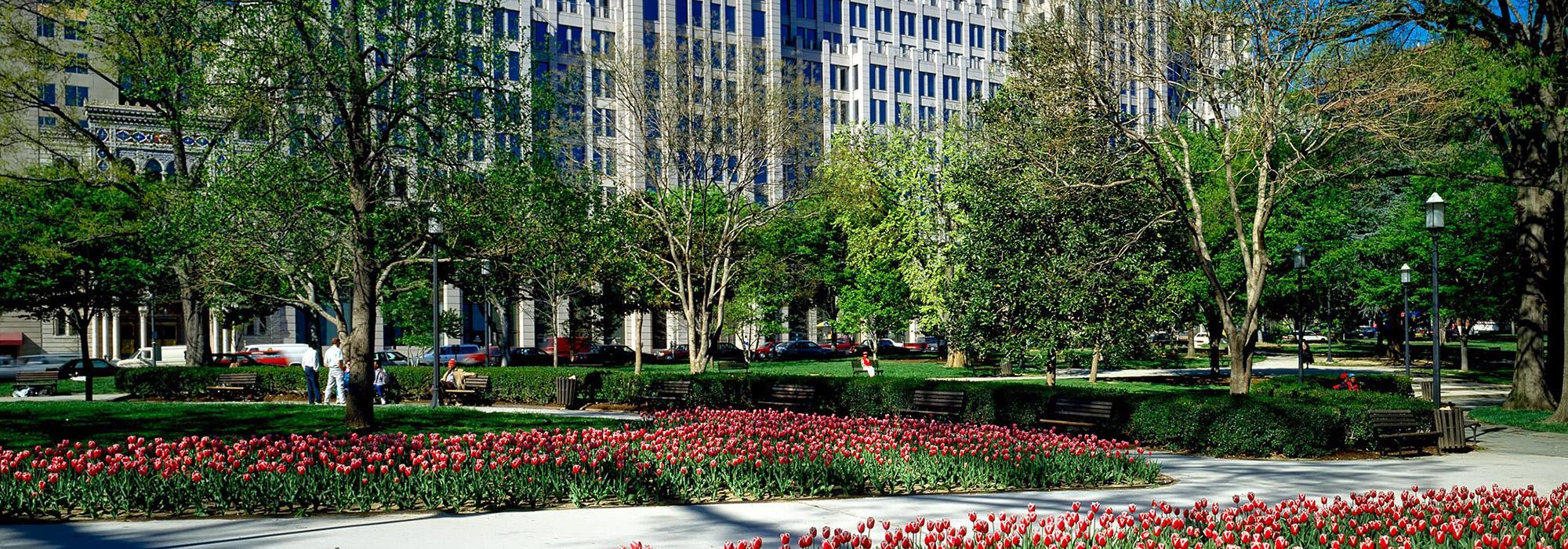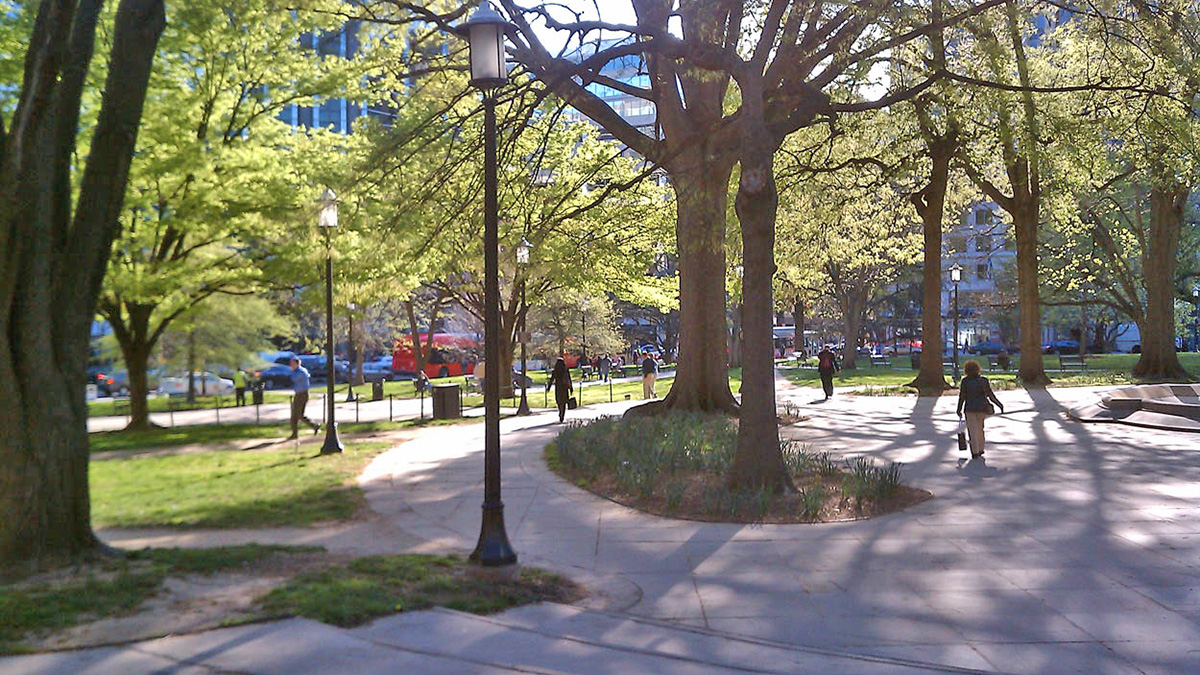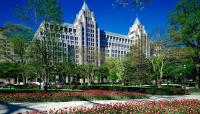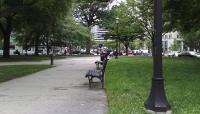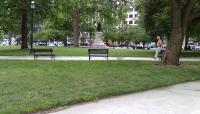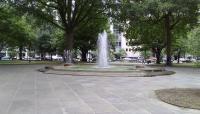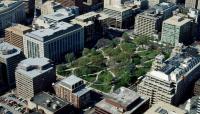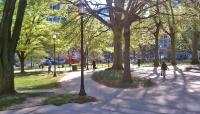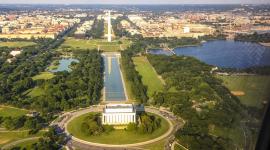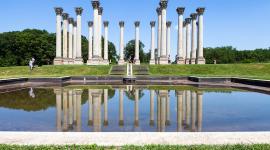Landscape Information
Designated a square in Pierre L’Enfant’s 1791 plan for Washington, D.C., this land was preserved as parkland in 1831 by order of the U.S. Congress to protect its natural springs that provided freshwater to the White House. Initially known as Fountain Square, the park served as a Union encampment during the Civil War but remained relatively undeveloped until the late nineteenth century. Between 1868 and 1872, curvilinear gravel paths, informal tree clusters of willow oaks, lindens, crabapples, and magnolias, and ornamental flowerbeds were added in the Picturesque tradition. A statue of the Revolutionary War hero Commodore John Barry was installed in 1914. In 1936 the park was redesigned by the Public Works Administration with new walking paths, a plaza with a fountain, and a lodge, the latter since removed. The original Victorian planting plan was retained although simplified, with the park’s flowerbeds and decorative urns removed. In the 2000s elements of the 1936 plan were removed, including evergreen trees and hedge borders, to create better views into the park and to provide the lawns more sunlight. The National Park Service, in partnership with the District of Columbia, began to renovate the park in 2014. A 2015 plan by the landscape architecture firm OLIN and ZGF Architects called for a children’s play area, seasonal plantings, and a rain garden, along with a sensitive treatment of the historic plant palette. The plan also included a new paved terrace above a cistern that would capture stormwater as well as greywater from a proposed onsite café.
Located within a dense urban setting, this five-acre rectangular park contains various species of oak, cedar, elm, and magnolia trees that dot gently rolling terrain. Beginning at each corner, elliptical paths curve inwards towards an oval flagstone plaza shaded by pagoda and zelkova trees. The plaza, featuring a central three-jet fountain, is surrounded by flowerbeds and was previously lined by hornbeam hedges that have since been removed. The bronze statue of Commodore Barry stands on a marble pedestal within a separate, smaller plaza on the western edge of the park.



